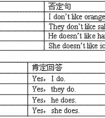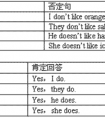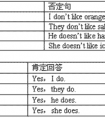单句改错.1. lt is snow right now. () A B C D 2. It's cold in the morning but turn warm at noon. ()AB C D3. It's hot in day and cold at night. ()A BC 4.-七年级英语
A foreign guest is giving a lecture this afternoon。今天下午一个外国客人将给我们作报告。
Are you staying here till next week? 你打算在这里呆到下个星期吗?
在表示将来的情况下,特别是be going to do sth. 这种结构,已经没有多少“去”的意思了,几乎就是用来表达“将要、打算”做什么事情。例如:
It is going to be rather cold tomorrow。明天很可能非常冷。
She is not going to speak at the meeting。她不打算在那个会上发言。
3.当其与always、forever、continually、constantly 等副词连用时表示重复的动作,而这种动作可能使人不满,厌倦或满意。例如:
①She is perpetually interfering in my affairs.她老是干预我的事。 (不满)
②The students are making progress constantly.学生们在不断进步。 (满意)
4.在时间、条件状语从句中,有时可用现在进行时代替一般将来时。
When you are passing my way,please drop in.
你什么时候路过我家,请进来坐。
A表示现在( 指说话人说话时) 正在发生的事情。
例:We are waiting for you.
B. 表示现阶段正在进行的动作,说话时未必正在进行。
例:Mr. Green is writing another novel.
(说话时并未在写,只处于写作的状态。)
例:She is learning piano under Mr. Smith.
C.已经确定或安排好的但不确定会不会发生的将来活动。
I'm leaving for a trek in Nepal next week.(我下周要去尼泊尔旅行)
We're flying to Paris tomorrow.(我们明天乘飞机去巴黎)现在进行时的应用
D .些非持续性动词的进行时可以表示动作即将进行或发生,或表示动作的重复。
例如:He is joining the army.
E.当现在进行时中有always, forever, constantly, continually修饰时,表示说话人的
赞赏或厌烦的情绪。
例如:They are always helping us.
注意:表示状态、感觉、心理活动的静态动词时,一般不使用进行时态。
F.子中有now时,常表示动作正在进行,这时要用现在进行时。如:
They are playing basketball now.现在他们正在打篮球。
G.ook, listen开头的句子,提示我们动作正进行,这时要用现在进行时。如:
Listen!She is singing an English song.听,她正在唱英语歌。
H.当前一段时间或现阶段正在进行的动作,且此时有this week, these days等时间状语,这时常用现在进行时。如:
We are making model planes these days.这些天我们在做飞机模型。
I.图片中的人物的动作,也为了表达更生动。此时也常用现在进行时。如:
Look at the picture. The children are flying kites in the park.看这幅图,那些孩子正在公园放风筝。
考点名称:定冠词(the)
定冠词:
具有确定的意思,用以特指人或事物,表示名词所指的人或事物是同类中的特定的一个,以别于同类中其他的人或事物,或用在世界上“独一无二”的事物的名词前,相当于汉语中的“那个” 或“这个”的意思。它可以和单、复数名词,也可以和不可数的名词连用。
例如:The panda is one of the animals most in danger.
Italy is in the south of Europe.
The earth goes round the sun. .基本用法:
1). 用以特指某(些)人或某(些)事物
This is the house where Luxun once lived.
这是鲁迅曾经住过的房子。
2). 用于指谈话双方都明确所指的人或事物
Open the door, please.
请把门打开。
3). 用以复述上文提过的人或事物(第一次提到用“a或an”,以后再次提到用“the”)
Once there lived a lion in the forest. Every day the lion asked small animals to
look for food for him.
从前森林里住着一只狮子。每天这只狮子要小动物们为他寻找食物。
4). 用在序数词和形容词和最高级前
January is the first month of the year.
一月份是一年当中的第一个月。
5). 表示世界上宇宙中独一无二的事物
the sun 太阳 the moon 月亮
6). 指由普通名词构成的专有名词
the West Lake 西湖 the Great Wall 长城
7). 表示方向、方位
in the east 在东方 in the west 在西方
8). 在海洋、江河、湖泊、山脉、海峡、海湾等地理名词前
the Pacific Ocean 太平洋 the Yellow River 黄河
9). 在姓氏复数前,表示一家人
The Bakers came to see me yesterday.
贝克一家人昨天来看我。
10). 和某些形容词连用,使形容词名词化,代表一类人或物
the poor 穷人 the rich 富人
11). 表示演奏乐器时,乐器的前面要加the
play the piano 弹钢琴
play the violin 拉小提琴
[中国乐器名词前不与冠词连用:play erhu(二胡)]
12).某些固定的表达法
in the morning 在早上 in the afternoon 在下午
in the evening 在晚上 go to the cinema 去看电影关于定冠词The 的用法 :
1 表示特指的人或物
例:Please hand me the key on the desk. 请把桌上的钥匙递给我。
The girl in red is his sister. 穿红色衣服的女孩是他妹妹。
The building over there is the tallest in the town. 那边那幢大楼是这个城里最高的。
I like the music of the film. 我喜欢这部电影的音乐。2 表示双方都知道的或心中明白的人或物
例:Shut the door, please. 请关门。
Has he returned the book? 那本书他还了吗?
Take the blue one, it is cheaper. 拿那个蓝的,它便宜些。3 第二次提到某人或某物第一次提到时用不定冠词,第二次提到时要用定冠词。
例:He saw a house in the distance. Jim's parents lived in the house. 他看见远处有一所房子,吉姆的父母就住在那所房子里。
There was once an old fisherman. The old fisherman had a cat. The cat was white. 从前有一个老渔夫。这个老渔夫有一只猫。这只猫是只白猫。4 用在世界上独一无二的名词前
这类词有:
the sun太阳, the earth地球, the moon月亮, the sky天空, the world 世界
例:The moon goes round the earth. 月亮绕着地球转。
There is not any cloud in the sky. 天空中没有一丝云彩。
It was a fine day in spring. The sun shone brightly. 这是一个晴朗的春日,阳光灿烂。
He is the richest man in the world. 他是世界上最富的人。5 用在表示方向、方位的名词前
这类词有:
the east东方,the west西方,the south南方,the north北方,the right右边,the left左边
例:The birds are flying to the north. 这些鸟向北方飞去。
The moon rises in the east and sets in the west. 月亮从东方升起,在西方落下。
The wind was blowing from the south. 风从南方吹来。
She lived to the west of the Summer Palace. 她住在颐和园的西边。
Walk along the road and take the first turning on the right. 沿着这条路往前走,在第一个路口往右拐。
He stood at the back of the door. 他站在门背后。
提示 :
方位词成对使用构成平行结构时,不用定冠词。
例:The river is two thousand kilometers long from west to east. 这条河自西向2000公里长。
They traveled through the country from south to north. 他们自南向北在这个国家旅行。6 用在形容词最高级前
例:Summer is the hottest season of the year. 夏天是一年中最炎热的季节。
She is the best person for the job. 她是最适合这个工作的人。
Hangzhou is one of the most beautiful cities in the world. 杭州是世界上最美的城市之一。
The car is the most expensive of the four. 这部车是四部车中最贵的。7 用在序数词等前
定冠词用在序数词前,也用在表示序列的next, last等前,还有在表示“同一”或“唯一”等的词前。
例:The first man to land on the moon is an American. 第一个登上月球的人是美国人。
She was the fifth to climb to the top of the mountain. 她是第五个到达山顶的人。
This may be the last chance. 这可能是最后一次机会。
If I miss this train I'll catch the next one. 如果赶不上这趟火车,我就赶下一趟。
He is the only person who knows the secret. 他是唯一一个知道这个秘密的人。
The two coats are of the same colour. 这两件外衣颜色相同。
This is the very book I want. 这正是我要的书。(用very表示强调)
提示:
a 序数词表示“又一”时,前面用不定冠词a(an)
例:He bought a second pair of shoes. 他又买了一双鞋。
He asked a question, then a second, then a third…他问了一个问题,又问了第二个,第三个……
b 序数词用作状语或表语时,前面不加定冠词。
例:George arrived first. 乔治第一个到。
=George was the first person to arrive.
Jim and Jack are both second in the match. 汤姆和杰克在比赛中并列第二。
- 最新内容
- 相关内容
- 网友推荐
- 图文推荐
| [家长教育] 孩子为什么会和父母感情疏离? (2019-07-14) |
| [教师分享] 给远方姐姐的一封信 (2018-11-07) |
| [教师分享] 伸缩门 (2018-11-07) |
| [教师分享] 回家乡 (2018-11-07) |
| [教师分享] 是风味也是人间 (2018-11-07) |
| [教师分享] 一句格言的启示 (2018-11-07) |
| [教师分享] 无规矩不成方圆 (2018-11-07) |
| [教师分享] 第十届全国教育名家论坛有感(二) (2018-11-07) |
| [教师分享] 贪玩的小狗 (2018-11-07) |
| [教师分享] 未命名文章 (2018-11-07) |






